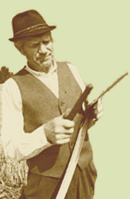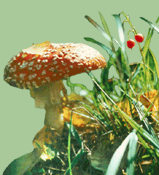Will the Estonian forest come to an end?
Lembit Maamets cover story features the reality of todays forest management. The numerous and rather dramatic figures reveal that forest management in Estonia is very far from being sustainable. Actually, never before in history has there been such extensive forest felling as now. The main tree species being felled are pine and spruce, while grey alder stands are left behind. Therefore, the author gives serious indications of the need for change in our forest management, otherwise our forest landscapes will change into log landscapes and alder forest landscapes.
The felled areas of the past decade as seen from satellite photos
Urmas Peterson introduces the use of satellite photos as a database for estimating the extent of forest felling in Estonia. He gives an overview of the method for finding felled areas from the satellite photos and brings two examples from two counties of Estonia where such method has been used to estimate the felled areas.
Wolf warns: keep a watchful eye on your dogs
Nikolai Laanetu portrays wolf, giving a description of its biology and habits, as well as of the social structure of wolf herds. He stresses that wolf is a natural part of our ecosystems and overhunting should be avoided. If wolf population becomes too small, wild dogs might become part of the herds and thus weaken the group.
Fifty years of DNA bihelix
Ergo Raukas recalls the development of science that has led to the current understanding of heredity and evolution. 50 years ago the structure of DNA was first described. However, the road towards the discovery of DNA bihelix started much earlier, already in the middle of the 19th century. The article introduces the path of DNA research and portrays the most outstanding scientists of the discipline.
Lehtsaare Nature Protection Area
Uudo Timm takes the reader to a small and not much known nature protection area of Lehtsaare in Viljandi County, near Suure-Jaani. Lehtsaare is mostly a forest area, with a patch of a bog. The environment is favorable for rich fauna, especially the capercaillie.
European rarities in Estonia
Ülle Kukk depicts a very endangered composite plant Liguria sibirica. In Estonia the main area of distribution is in the southern part of the country. The eye-catching flower is nowadays mostly endangered by the fast spread of brushwood.
Interview: Nature protection helps to advance the rural communities
Toomas Kukk has interviewed Kaja Lotman, a protector of nature and country life in Matsalu.
Would we survive a nuclear night and nuclear winter?
Kalju Eerme discusses the potential of humankind to survive a nuclear night or nuclear winter. He looks back into the history of nuclear testing and describes the possible horrors that would follow a major nuclear conflict.
Starch, the secure resource of plants
Urmas Kokassaar writes about starch how it functions and where it is used. Although absolutely necessary for human health, overdosing can cause problems.
Hawaii islands the homeland on Pele, the goddess of volcanoes and fire
Igor Tuuling has traveled on the islands of Hawaii, which in so many cases have been described as being the most beautiful place in the world. He had a chance to visit numerous wonders of Hawaii that are usually bypassed by tourists, such as the lovely Garden Island and the Na Pali cliff coast.
Practical tips: how to picture a frog?
Jaanus Järva gives some advice about getting attractive photos of frogs, the seemingly cold and boring animals. Spring is definitely the best time for catching frogs in action.
Essay
Urmas Kalla considers the just-in-case nature protection to be important for nature as well as for the people.
Eesti Loodus enquires
Villu Lilleleht calls to use the correct bird names.
Aiki Aavik tells about a conference organized by the Society of Estonian Forestry Students.
|


![[IN ENGLISH]](images/gb.gif)





